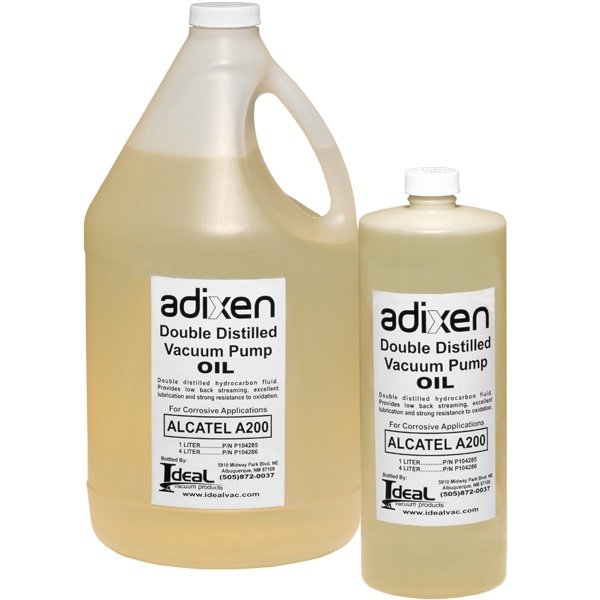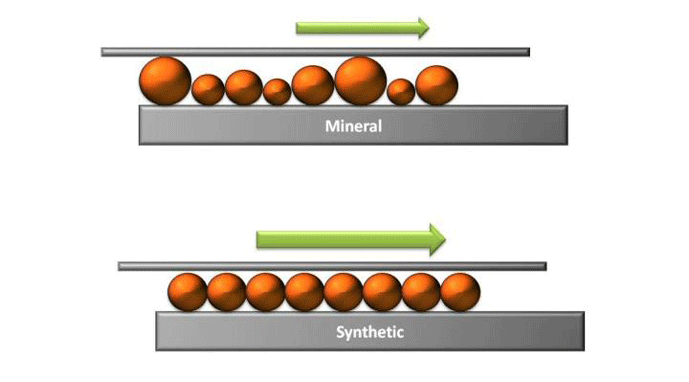Get Tech Tips
Subscribe to free tech tips.
Choosing the Right Vacuum Pump Oil

We all understand that vacuum pump oil is the lifeblood of our vacuum pumps. We know what the function of vacuum pump oil is and how it functions. But how do we apply that knowledge when choosing the oil best suited for our pumps? Many of us simply pick up what’s in the stock room or on the shelves at the parts house. However, there is a good possibility your stock room and suppliers don’t carry the correctly designed pump oil for our trade’s vacuum pumps. In order to understand the types of vacuum pump oil, here’s a quick review of the characteristics of pump oil:
- Vapor Pressure
- The lower the vapor pressure, the deeper the vacuum the oil is rated for
- Viscosity
- Medium viscosity (thickness) is used for warmer temperatures
- Lower viscosity (thickness) is used for cooler temperatures
- Distillation
- The process of removing sulfur from mineral oil to refine the oil and reduce the vapor pressure
It is important to understand distillation because distillation defines the application for which the pump oil is designed. Single-distilled oil is mineral oil that goes through a distillation process one time. The process reduces the sulfur content of the oil, and the resulting oil color is light brown. This oil is used for single-stage oil-sealed rotary vane pumps. The ultimate vacuum of single-distilled oil is 10 microns (1 x 10-2 torr).

Double-distilled oil goes through the distillation process a second time, further removing the sulfur content of the mineral oil. The resulting color is a lighter brown. This type of oil is designed for use on most two-stage vacuum pumps and has an ultimate vacuum of 1 micron (1 x 10-3 torr).
Triple-distilled oil goes through yet another molecular distillation process and is devoid of sulfur or other impurities. This oil is chemically inert and is highly resistant to oxidation and reactance to other gases. Triple-distilled pump oil is transparent and is designed for an ultimate vacuum of 0.6 microns (6 x 10-4 torr).
Hydrotreated oil is a high-end pump oil designed for high vacuum applications, such as industrial and science. Hydrotreated oils are inert and achieve a higher purity than any distillation process could boast. The process by which this oil is refined involves a hydrocarbon oil being combined with hydrogen under high pressure and temperature. This removes sulfur, nitrogen, and various other impurities from the oil. This type of oil is the purest oil available (and the most expensive) and is clear in color. The ultimate vacuum of hydrotreated oil is not important, as this is not oil that our trade uses. However, it is important to understand some drawbacks of hydrotreated oils; I have seen companies use this highly expensive oil without fully understanding the characteristics.
Distilled vacuum pump oil is mixed with specific solvents, which aid in lubrication, oxidation resistance, and foaming resistance. These characteristics are important for vacuum pump oil, as they increase the life and performance of the pump and the oil itself. Hydrotreated pump oil, however, does not share the same solubility as distilled pump oil. This means hydrotreated oils do not mix with the necessary additives our trade-specific vacuum pumps require. This can damage a vacuum pump and decrease vacuum efficiency if not used in the appropriate application.

Synthetic (Perfluoropolyether) oil is the final oil we will discuss here. This particular oil is very inert and has a consistent molecular viscosity. The non-naturally-occurring synthetic oil molecules are uniform in composition, whereas a typical distilled mineral pump oil has a viscosity based on the average molecule size. Synthetic oil is designed specifically for highly corrosive vacuum environments that contain gases like hydrogen peroxide, chlorine, hydrogen fluoride, etc. If a distilled mineral oil were used in these applications, it would quickly break down and end up overheating the pump due to inadequate lubrication. This type of oil is not for use in our trade.
All these different vacuum pump oils are designed for a specific application. Many of the suppliers in my area carry triple-distilled pump oil, and it is on the shelves of many stock rooms. However, the ultimate vacuum triple-distilled oil is rated for is beyond the design of our trade-specific pumps. Triple-distilled pump oil is used in pumps rated for continuous operation, not the intermittent operation we apply to our pumps. The typical HVAC/R technician will use either a single-distilled or double-distilled pump oil. Single-stage pumps use single-distilled oil, and two-stage pumps use double-distilled oil. It’s fairly simple to remember. Both oils are cheaper than triple-distilled oil anyway, so there is really no reason to carry triple-distilled oil on the truck or in the stock room. Next time you’re in the supply house, look at the rated viscosity and vapor pressure of the oil on the shelves.
Another vacuum pump fluid worth mentioning is flushing oil (fluid). Flushing fluid is basically a solvent oil containing high concentrations of the helpful additives already present in distilled mineral pump oil. This pump fluid can be used to clean the residual contaminants (water, oxides, etc.) from your pump left over from the previous oil. Flushing fluid can be highly beneficial before and after the use of the vacuum pump.
In summary, there are many different types of oil used in vacuum pumps, and our trade must be aware of the type of oil we use in our trade’s specifically designed vacuum pumps. In order to optimize the full performance our pumps were designed to deliver, we may sometimes need to question the unspoken norms. Constructive skepticism will push our trade to the next level of professionalism and overall growth.
Know your pump, know your oil. The performance and ultimate vacuum of your pump demand that you keep the correctly designed pump oil in its vanes… see what I did there?
—Kaleb
References:
https://vacaero.com/information-resources/vac-aero-training/24460-vacuum-pump-oil.html
www.edwardsvacuum.com
www.vacoil.com











Comments
To leave a comment, you need to log in.
Log In